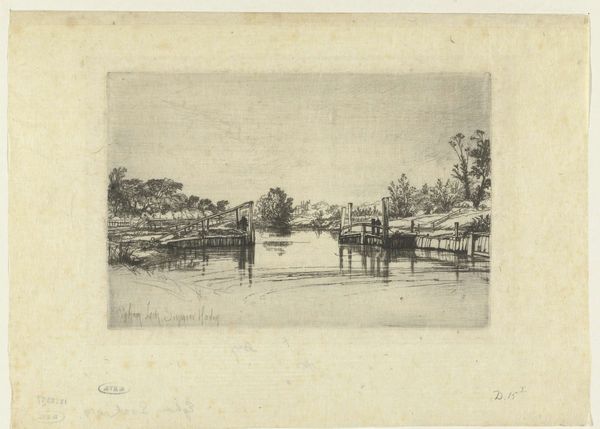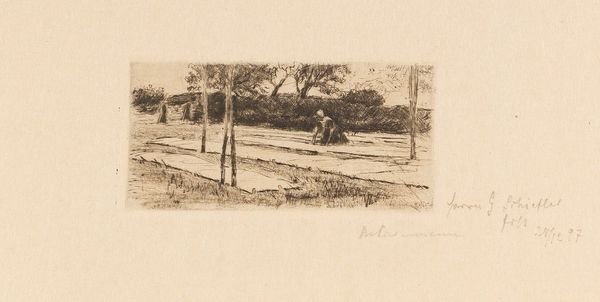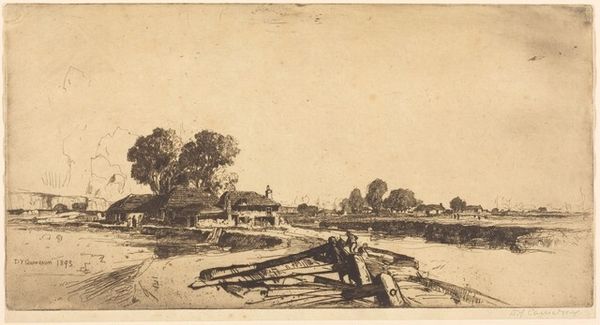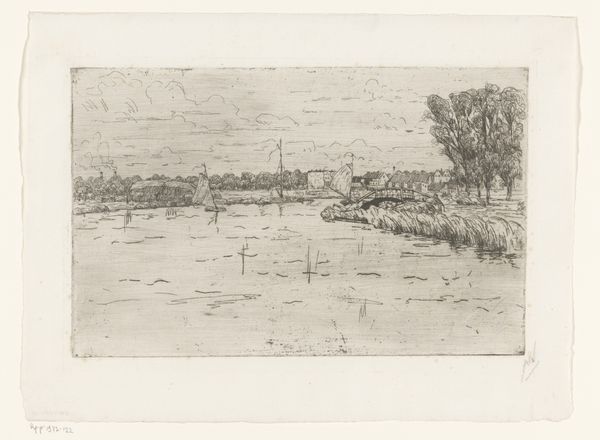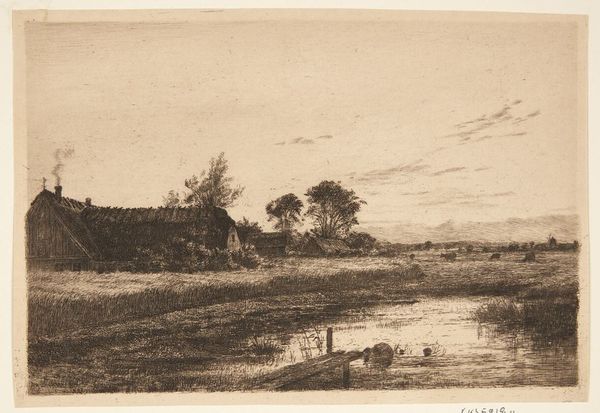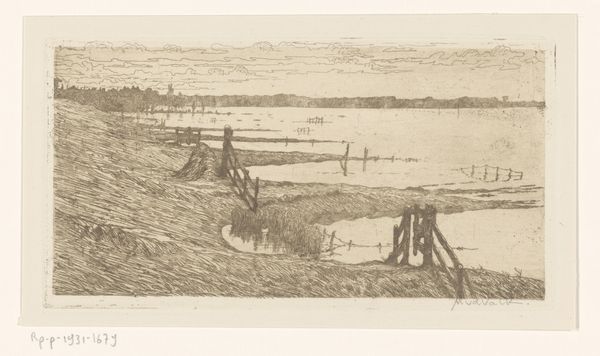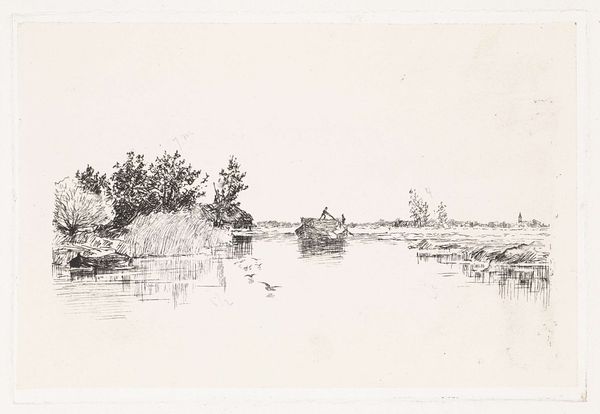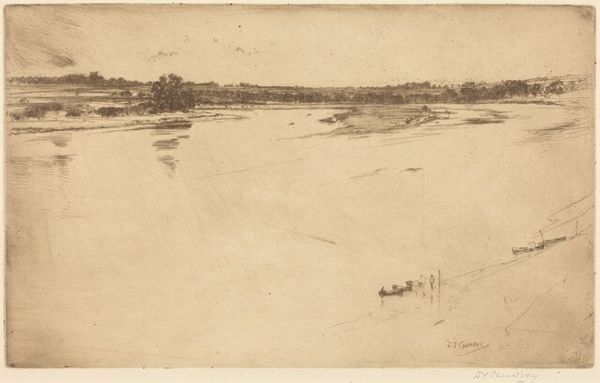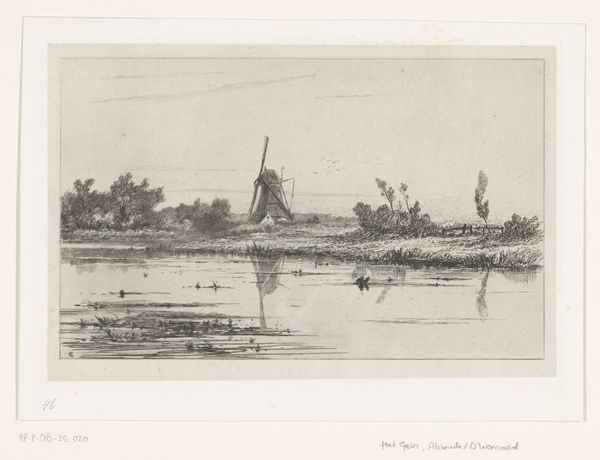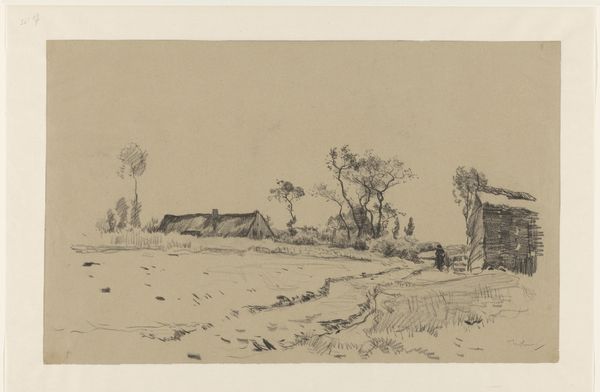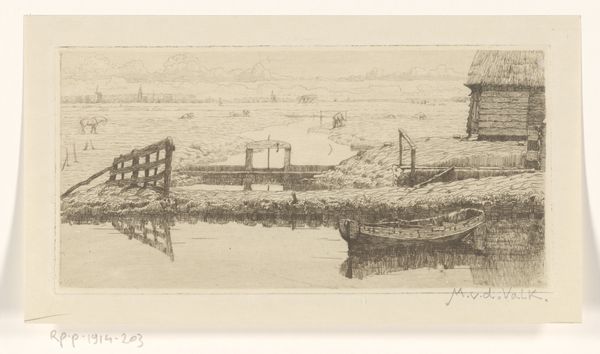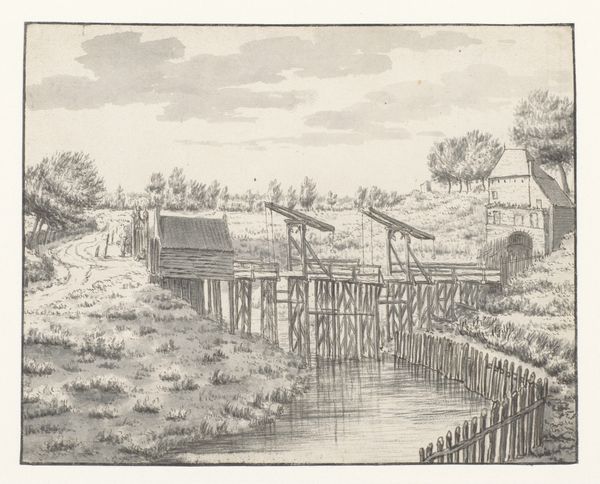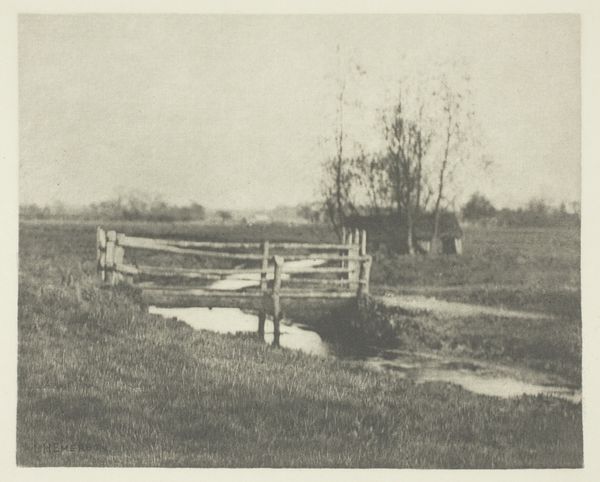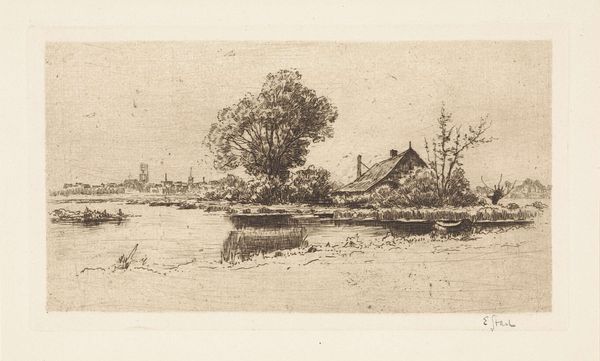
print, etching
#
pencil drawn
#
dutch-golden-age
# print
#
etching
#
pencil sketch
#
landscape
#
charcoal drawing
#
pencil drawing
#
realism
Dimensions: height 169 mm, width 249 mm
Copyright: Rijks Museum: Open Domain
Editor: Here we have Elias Stark's "Bruggetje over een sloot," a print made with etching, likely between 1859 and 1908, housed at the Rijksmuseum. It’s quite delicate, almost dreamlike. What draws your attention when you look at this piece? Curator: What strikes me is the quietness, almost the deliberate ordinariness. Stark isn't trying to glorify nature or create a dramatic scene. He’s showing us the everyday, the mundane. But what does it mean to represent the mundane? It prompts questions about who has the privilege to see the world this way. Was this accessibility available for everyone at this time? Editor: That’s an interesting point. It seems like a very personal observation, not necessarily intended for public display. Curator: Exactly. This image prompts a consideration of class and access to leisure, reflecting on who had the time and resources to contemplate the subtle beauty of the Dutch landscape, and how art either reinforces or challenges those social structures. The bridge, while seemingly simple, connects to larger societal implications around land ownership and access. Editor: So you're saying this landscape, in its simplicity, speaks volumes about the social context of the time? Curator: Absolutely. The etching itself becomes a document, quietly revealing power dynamics and the selective vision of art history. Considering the late 19th-century context, where industrialization was rapidly transforming the landscape and displacing rural communities, this idyllic scene could be interpreted as either a nostalgic yearning for a disappearing way of life or a form of escapism for a privileged class. How might contemporary artists respond to such a scene today? Editor: I guess I hadn't considered those wider implications before, seeing just a simple bridge and stream. Thank you. Curator: Precisely. Art invites us to consider the world, not as it seems on the surface, but how its representation is woven into the complex fabric of history and society. Editor: It definitely gives a new perspective to seemingly ordinary artworks.
Comments
No comments
Be the first to comment and join the conversation on the ultimate creative platform.
